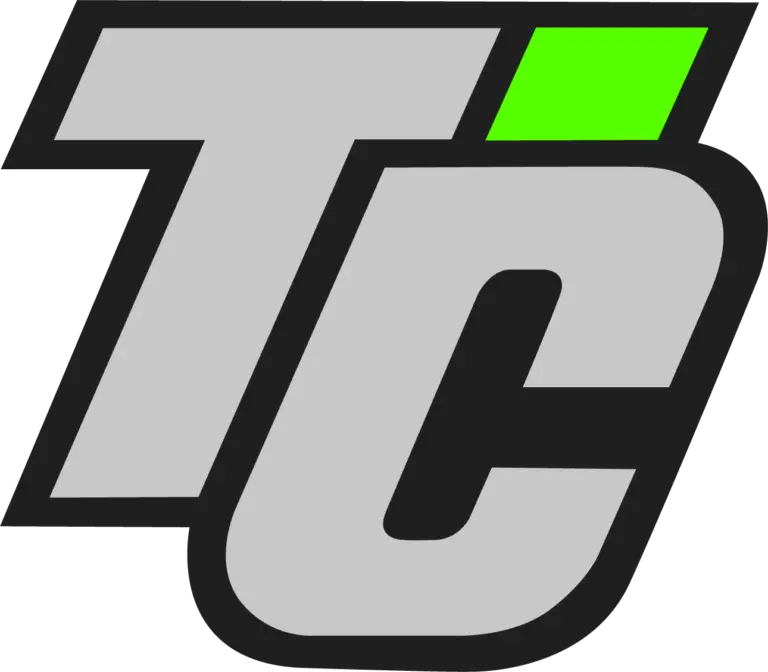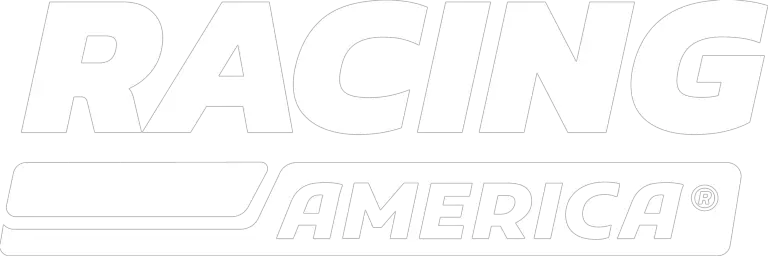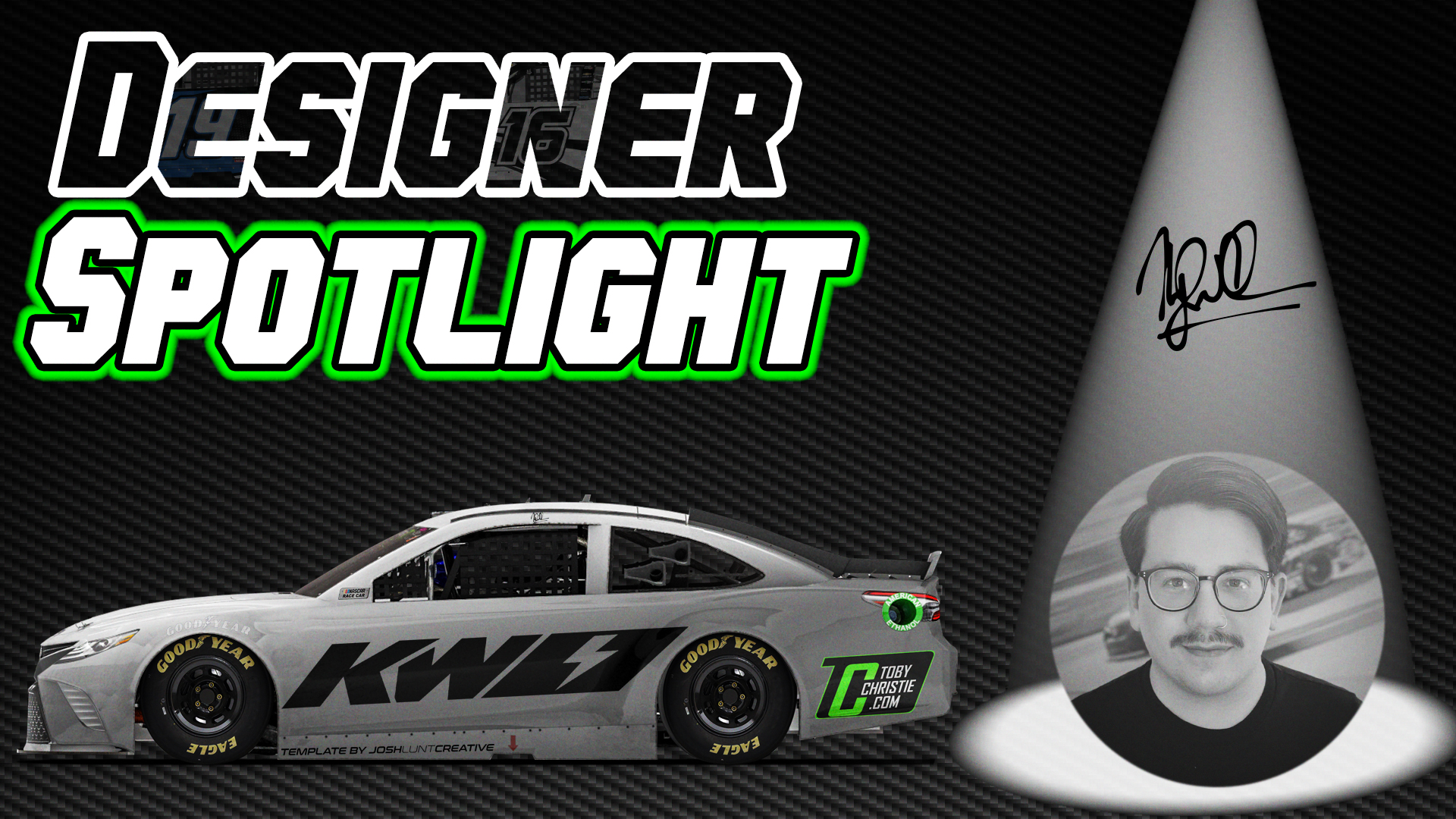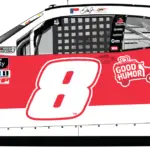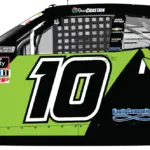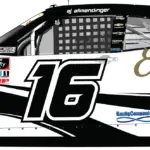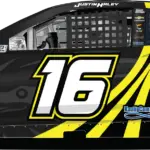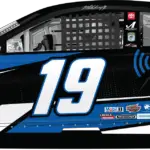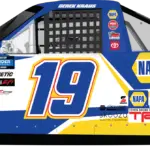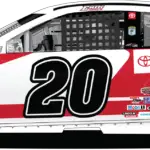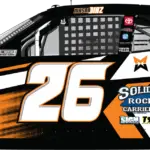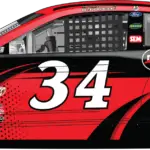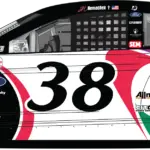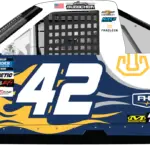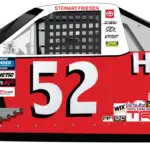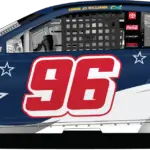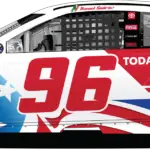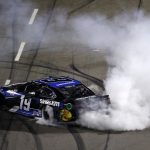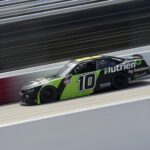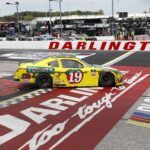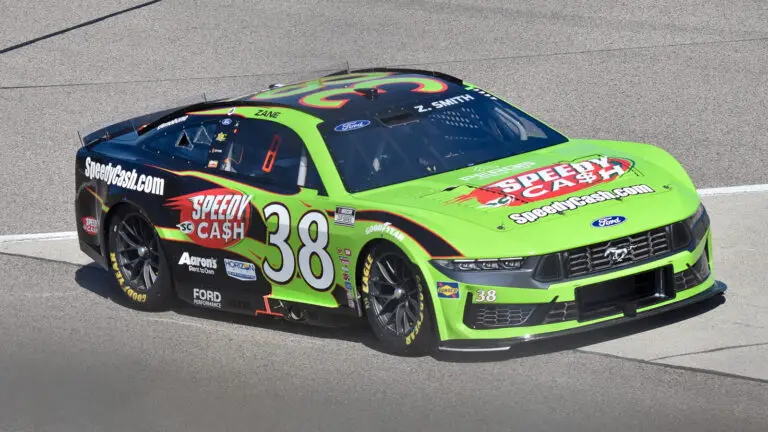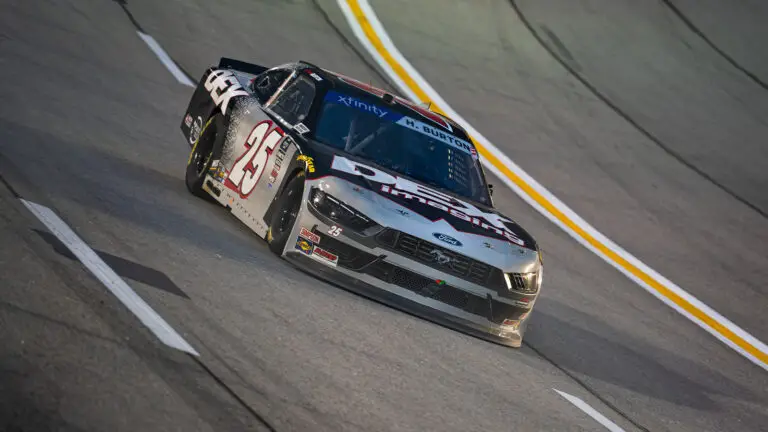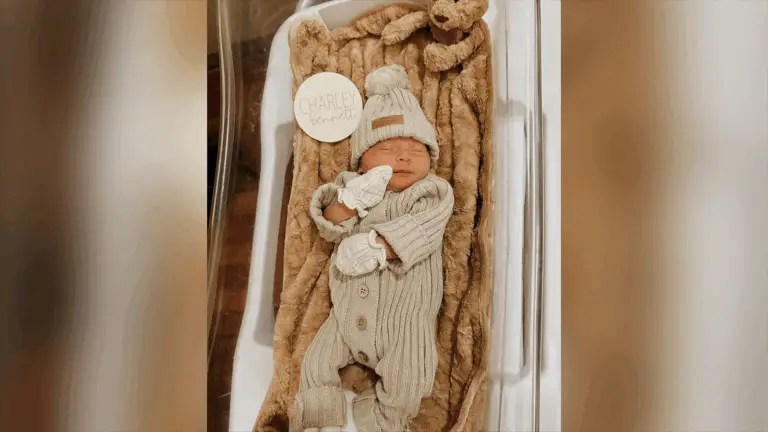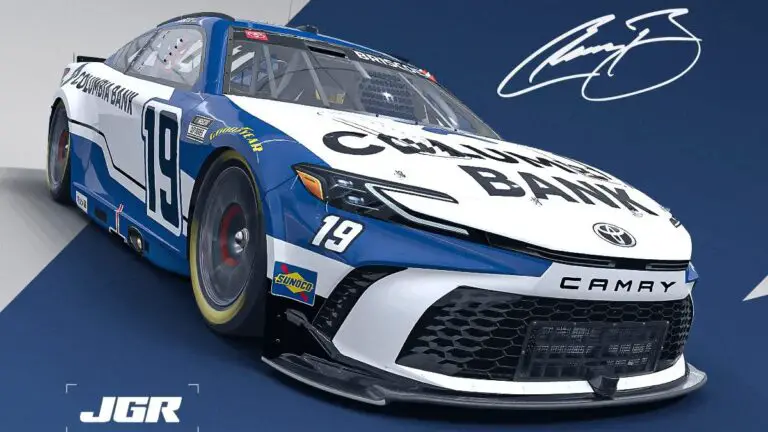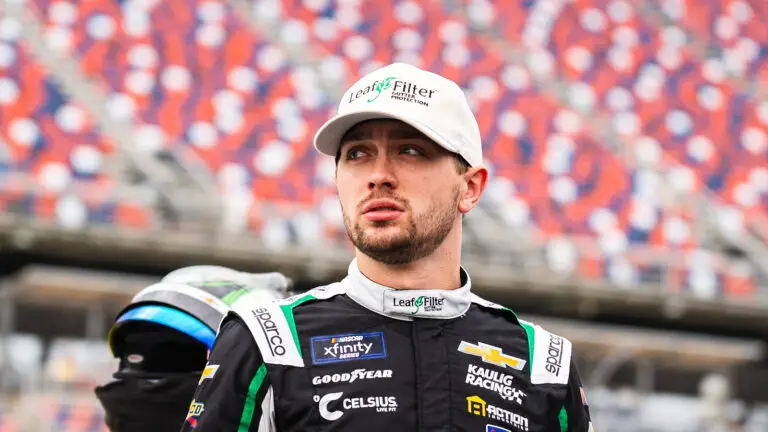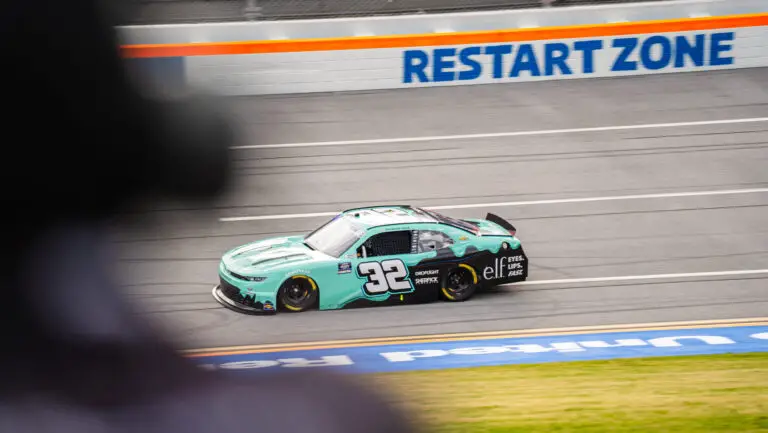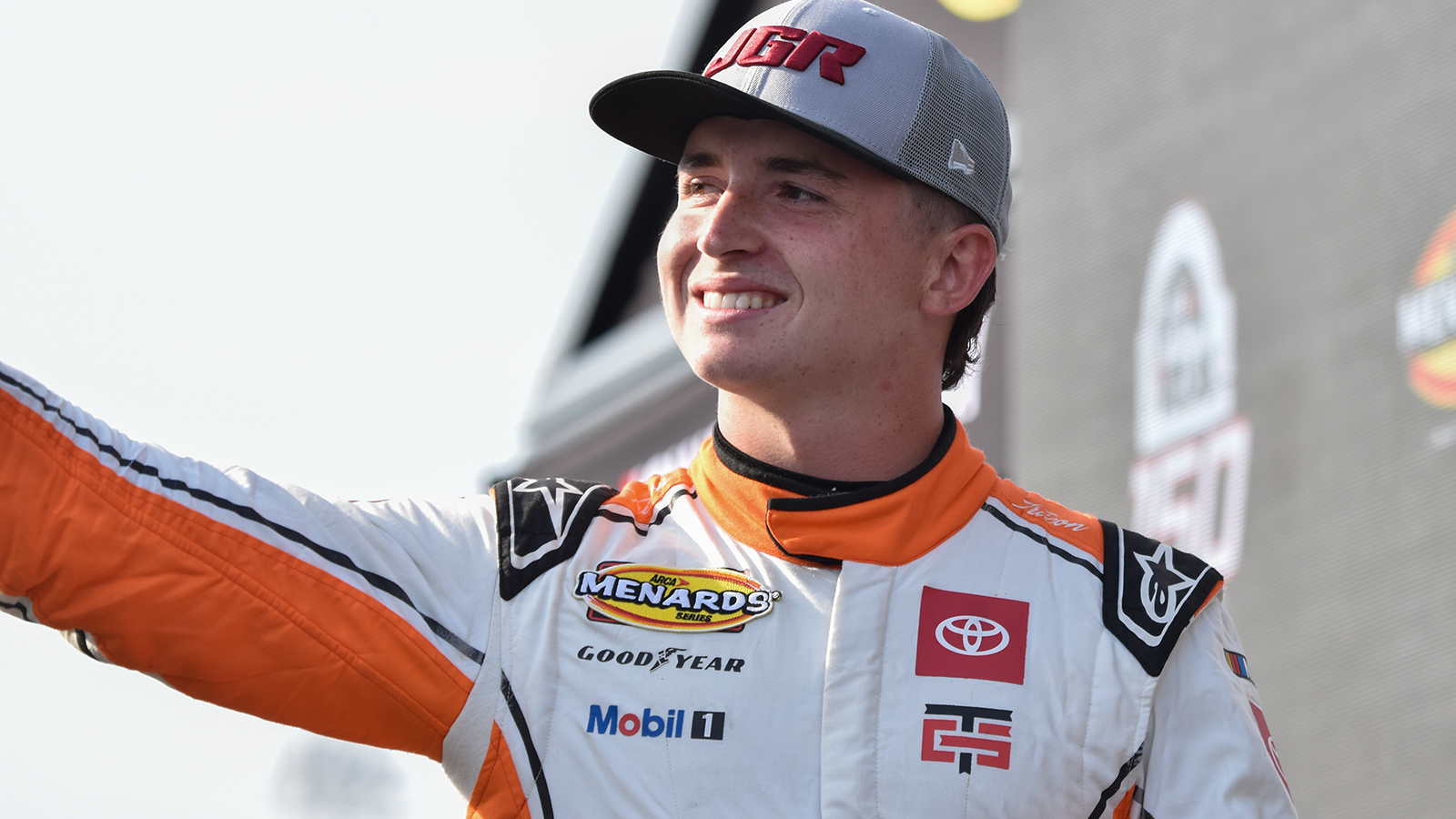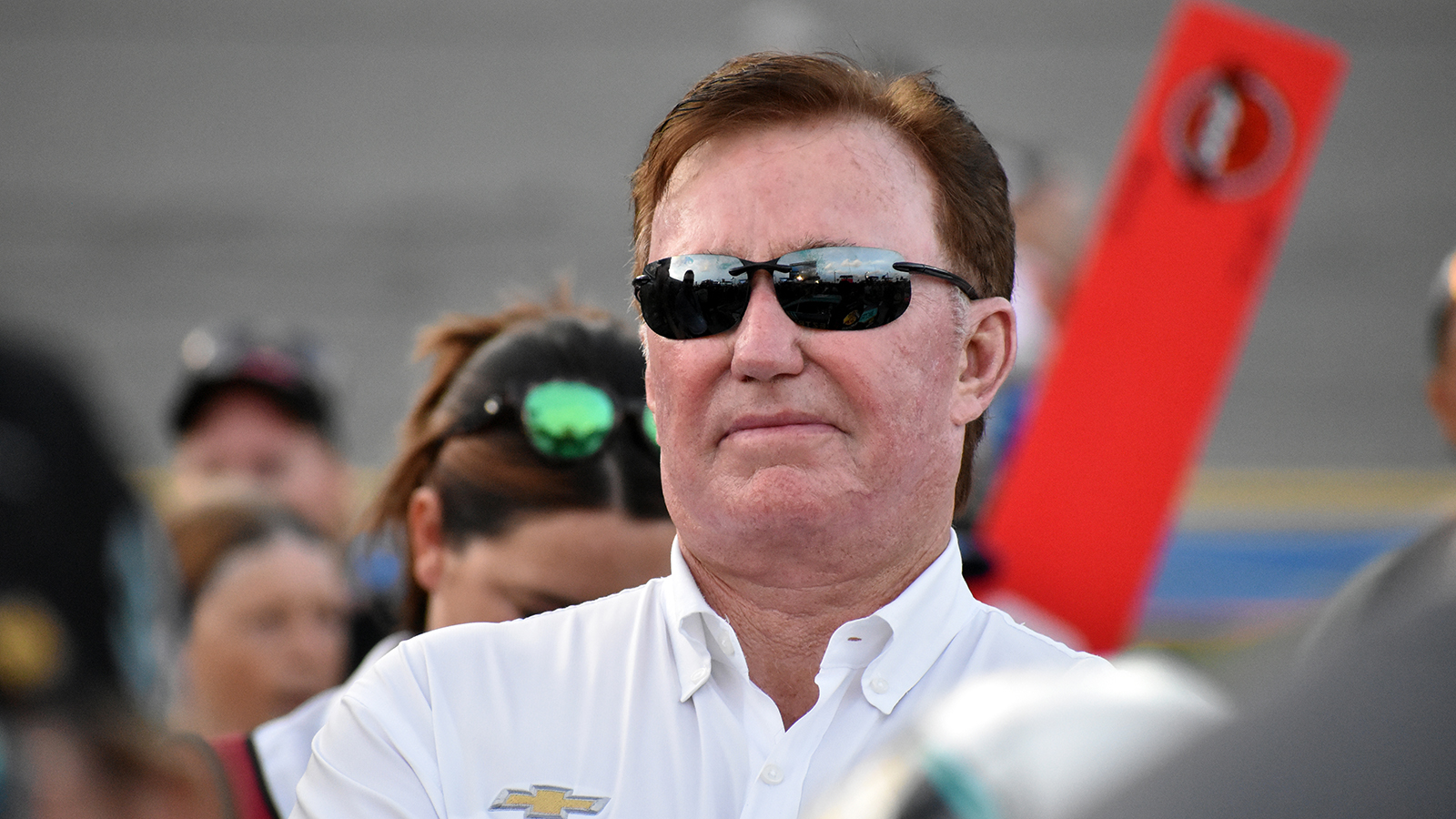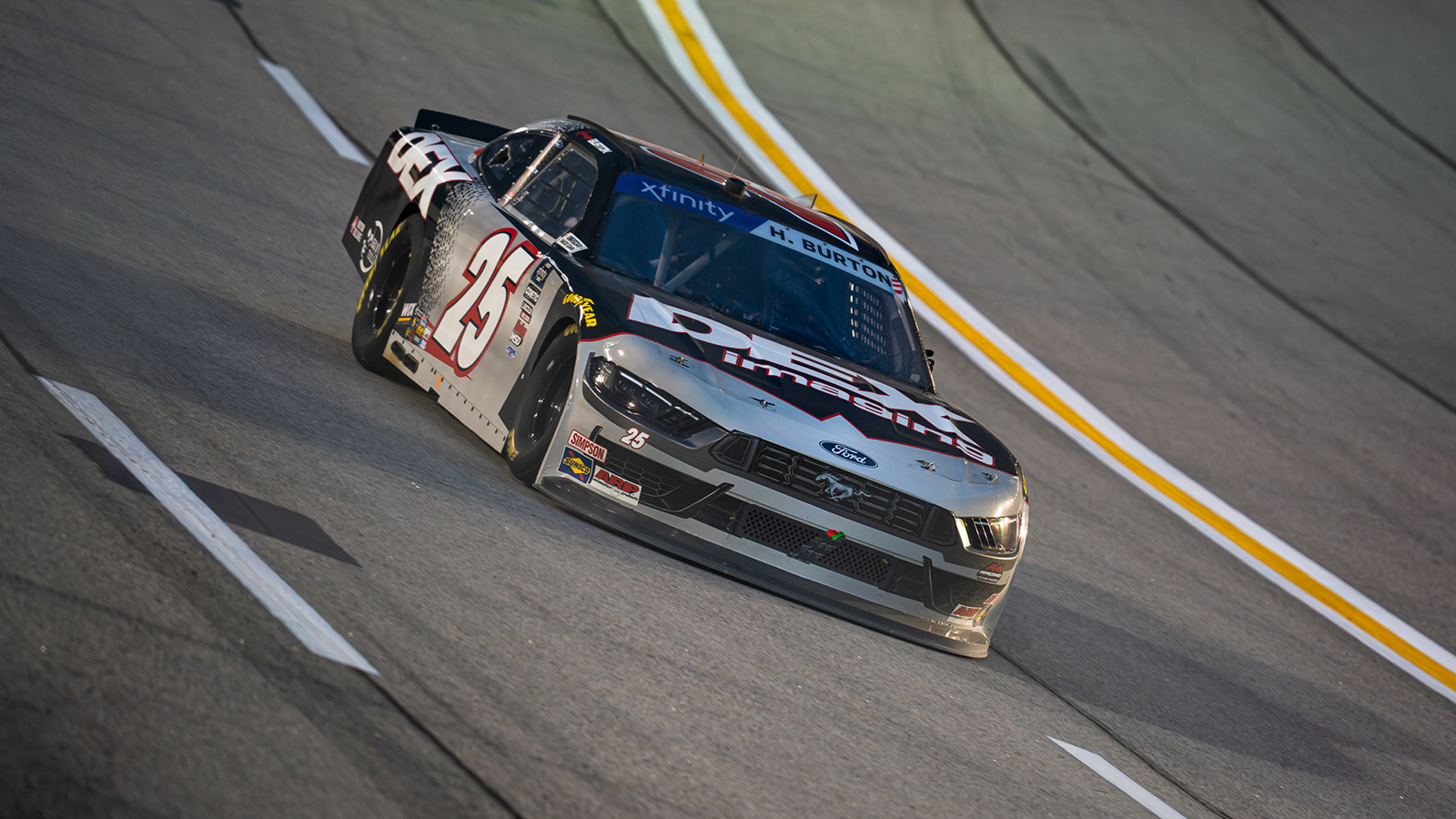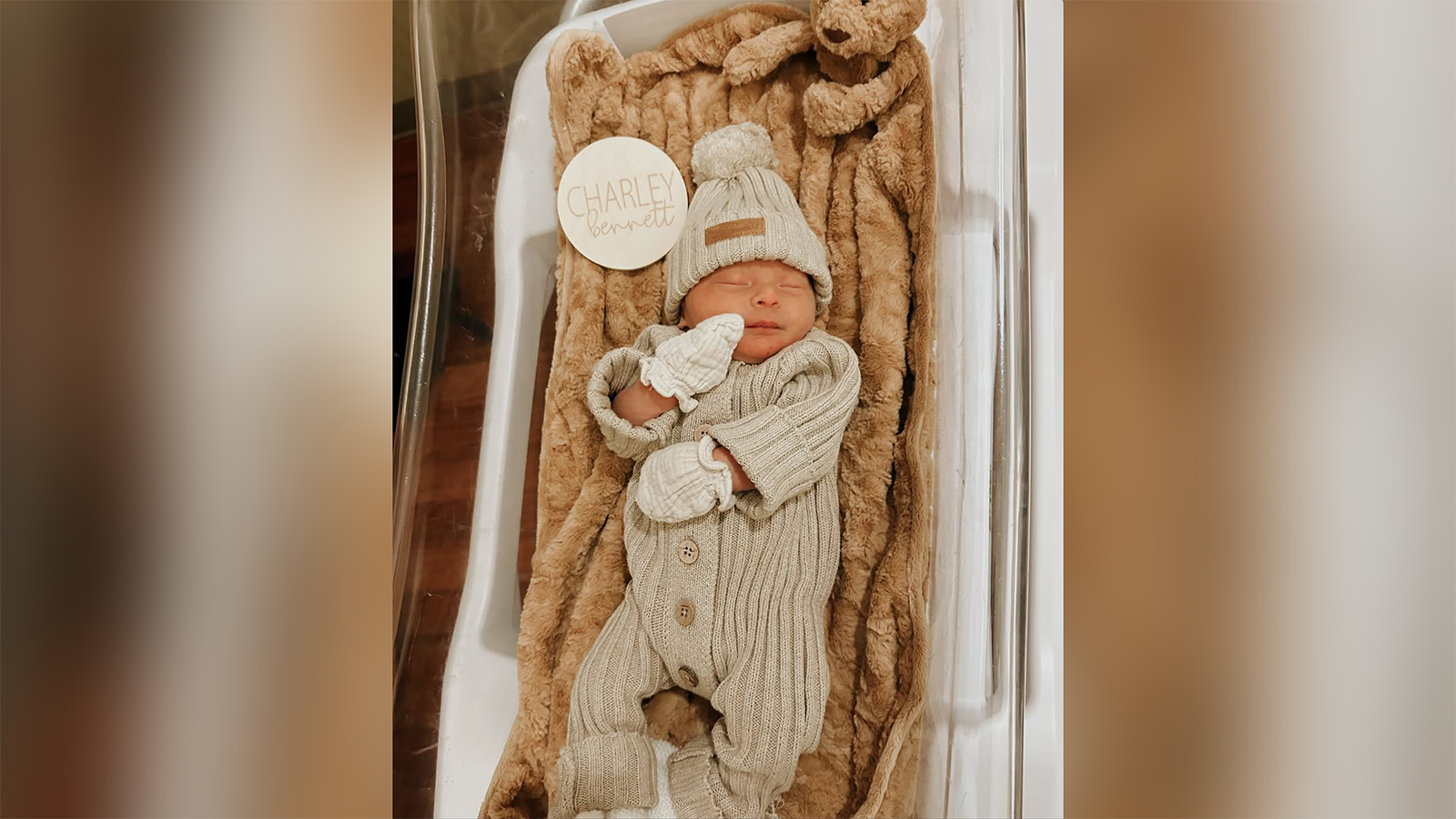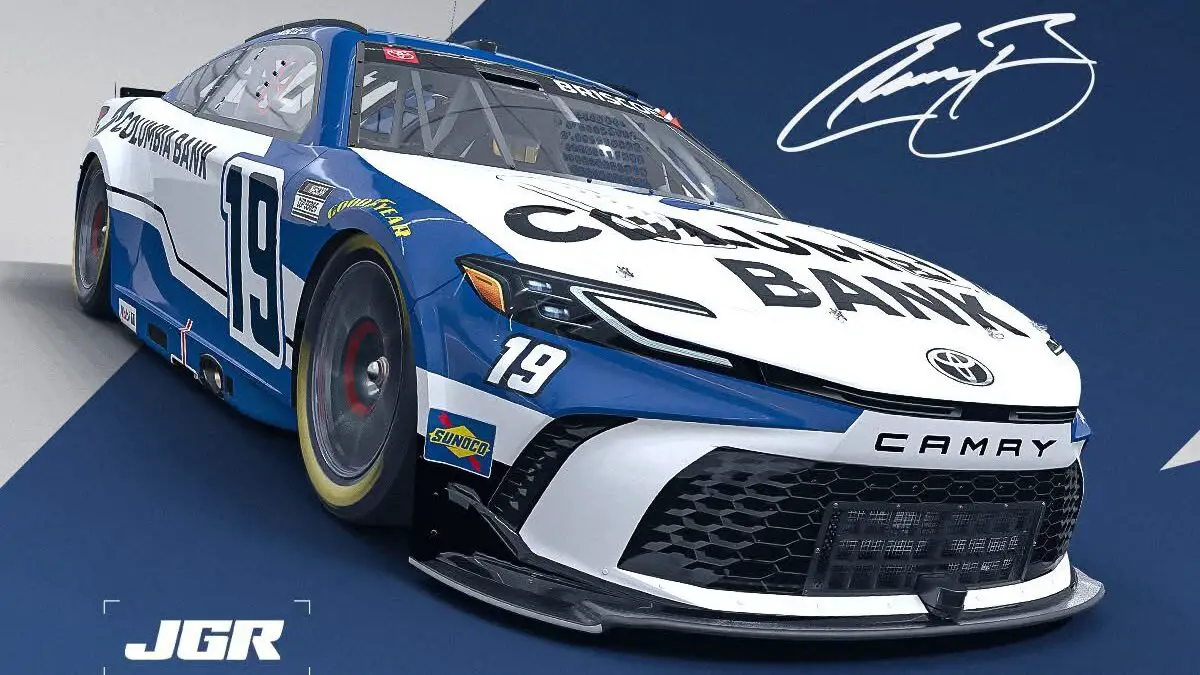When a fan first discovers NASCAR, typically there are three things that could be a potential draw towards a growing love for the sport.
The speed, the danger, and car designs. As a child, you may recall the first time you saw “that” paint scheme that sent your love of NASCAR into a lifetime relationship.
The design of a paint scheme is one of the very first things to entice a fan into finding their favorite driver and establishing allegiance to a particular team.
This special off-season series will take a look at designers in the sport that spent their 2020 season tirelessly cranking out paint schemes one after another. So much so, you may even learn about a favorite of yours that came from one of these designers.
This week’s spotlight shines brightly on Kyle Williams – a designer from Scranton, Pennsylvania that is currently residing in North Carolina.
In the 2020 season, Kyle placed over 70 paint schemes on track from the ARCA Menards Series, all the way to the NASCAR Cup Series working with The Decal Source. Created in 1999, TDS has been a trusted partner for decades across many race teams and manufacturers including Joe Gibbs Racing, Team Penske, NIECE Motorsports, and Toyota.
Where did your love for design first begin?
KW : I had always grown up around racing, before I can even talk, my dad was racing go-karts, so it’s always been in my blood.
The first car I was ever really drawn to was Bill Elliott’s McDonalds car from 1995. I didn’t;t know who the driver was at the time – I just thought they were the coolest colors with the red, white, and yellow.
Both my parents were also very artistic so I would try to emulate what they were doing – whether it would be painting, taking pictures, and such – so I started drawing race cars. I became that weird kid at school that was drawing race cars while everyone else was playing sports. When I was around 11 or 12 years old, I started realizing that I could really do this. I started messing around with NASCAR Racing 2003 and making scheme proposals and concept designs in Photoshop. I started getting into more of the marketing aspects of it and I started following Sam Bass.
I started to see that there was a career path behind this, and I can do this for a living. But there was a period of time where I didn’t know if I wanted to go into racing or the music route because my past is also heavily influenced by music as well. A lot of great things happened in a row that just got me into racing.
What led you into NASCAR, and what was your first big break?
“I had sign shop experience in the past with my best friend from back home, and from there I learned everything about the design process, working customers, installing, wrapping etc. All of that stuff gave me the confidence to pursue The Decal Source, which I followed for years. I saw there was an opening, and within a two and a half week period, I went from not knowing if I was staying in Pennsylvania, to having a job in North Carolina and working on race cars.
I didn’t think within the first year I would have a design on track – all I really knew was that I would be working around race cars and paint schemes.
The first scheme I ever did was for Premium Motorsports, and the Justin Marks Go Pro Motoplex car that he ran at the first ROVAL race. It still gives me chills – I don’t know how to explain it, just to know who the driver was and the race track and know about the sponsor.
That is what’s great about The Decal Source – we have all these relationships with teams and they trust us to give them what they want through not just me as a designer, but our sales team, the production team, the install team. It’s a huge group that comes together to make it possible to wrap these cars.”
When coming up with a scheme, what is your design process like?
“The biggest thing is to know what the sponsor is really looking for. A lot of times what ends up happening is that they don’t know what they want, and that gives me more creativity, but it also makes it a little more challenging. I feel like in the back of their heads they know what they want, but they do not know how to express that. So it’s my job to almost sort of reading their minds and to anticipate what they are looking for.
One thing I think about is if I want the car to be angular, with a lot of points, or if I want it to be more ‘flowy’. It really just depends on the criteria that I am given, whether it is a full wrap or a partial wrap. You’ll notice on the NIECE trucks, they like to do partial wraps, and that’s not only cost-effective, but it is also easy for the team to install themselves. A lot of times the sponsors would come on at the last second and there wasn’t a lot of time to do them, so we would have quick turn arounds. It’s a mad dash scenario, but it has become the norm especially these days.”
How do you handle that rapid pace to ensure you have a quality design, and to meet your deadlines?
“That can get really tricky, and that plays into your mental game a bit and you start to question whether you are actually giving it your all, or if it all just comes together conveniently quick. That’s why I sort of develop my system of if I want the car to be angular or a flowing kind of feel to it. When I can base my ideas on those two concepts, it allows me to create something much quicker. I’d say given the practice I’ve been giving over the past two years, I’ve gotten a lot quicker just because of how fast these schemes have to come out.
Daytona is probably the worse week of it all – there are a lot of last-minute deals that come together, last-minute sponsorships, and there have been a couple of times where I had to design something the day of the Duels or the Clash and the design is getting wrapped as the car is being pushed to the grid. It’s mentally taxing because you start to question if you needed all that time, or was it really just everything that came together with, you know in that 25 minutes that you had to put something together. I’m starting to realize that I can put stuff together that quick. You have to build up a process to that point.”
What is your favorite kind of schemes to design? Simple schemes, complex schemes – what is your favorite spot to be in?
“I really like really simple schemes, and it’s strange because my past doesn’t really reflect that. I came from doing a lot of dirt modifieds and short track cars up in Pennsylvania, New York, and New Jersey. Those designs are crazy, full of neon, pattern backgrounds, and once I got down here on the NASCAR side, NASCAR is a lot cleaner. Sponsors don’t like to have their logos on top of any kind of design – they like their sponsor to be the forefront of every design. So I really like to do things in a really clean manner. There are times where I can get away with doing very complicated designs, but as long as I keep the area where the sponsor and number are completely clean, it still gives the illusion of keeping the car very clean.
One of my favorite examples of that was the Sam Hunt Racing Mulchmate car, as well as the Prince William Marina car. Those two are great examples of what I could do with very busy designs, but also keep it very clean and draw your eye to the quarter panel and the number first. Those are kind of the thought processes I go through where I want those two things to be at the forefront. I don’t want a design to overtake what the sponsor is.
I’d say some of my favorite stuff though is the throwbacks cars because I’m such a nerd for nostalgia and the history of all three series and to be able to bring any of that stuff back is really special to me. To know that the original drivers will see that work is really special. ”
With the @nascar season now over, here are the 78 designs I was fortunate enough to create and have on track during this crazy 2020 season, thanks to my incredible job at @thedecalsource Let me know which scheme is your favorite! pic.twitter.com/PPTlPajNCc
— Kyle Williams (@_kylewilliams) November 10, 2020
What sets you apart from other designers?
“Besides the fact that I work at an actual company and I don’t actually interact with the drivers themselves, I don’t have to go out and do that ‘pull’. On the design side of things, I have a lot of experience on the print side of things so when I’m designing a car, I think about every element that is going to get installed on that car. A lot of designers might try to wrap around to the front of the nose, and that stuff looks great but it’s a lot more complicated for teams that do not use our install or that don’t have that experience. We have the luxury of having a set of really good templates most of our work into the wrap, such as the number, and the contingency.”
Let’s talk about your design portfolio. What is your favorite all-time design you’ve ever created?
“That’s such a tough one. I was thinking about this before this even started… I would say the SiriuxXM Martin Truex Jr. car.. but I’m also a big fan of the Erik Jones Toyota scheme that ran this year. A lot of time went into that one as well as some out of the box thinking. I don’t know how popular that scheme is but when I see it, it makes me happy. I felt like I hit my peak at the end of the year and I hit every design aspect I wanted in my own personal list. But if I can give one simple answer – It’s the Martin Truex Sirius XM car.”
Working with NIECE, Kaulig Racing, and many in the Toyota camp – does the design language change from team to team?
That’s where it gets very complicated because there is a language for every team. In the beginning, it was very hard to understand it. Kaulig has their own, as well as NIECE, and they a little more laid back to let me do what I want just following their own guidelines of having a partial wrap. But when it comes to a team like Kaulig, they like very clean, very simple, they like it to stand out and be memorable. Achieving that can be difficult and trying to bounce back and forth too – sometimes I’ll work on two cars side by side.
So in the morning I’ll be working on the Kaulig car and I have to make this clean, simple, and make it stand, and then the NIECE trucks are different. Like the Travis Pastrana truck – it was an absolutely bananas design. It had stars, it had stripes and an eagle on it. On the same day, you have to be able to shift gears to work on something like that. So that makes it a little difficult and it can be mentally taxing but I’d rather be stressed about design than anything else honestly.”
You designed in every touring series this season from ARCA to Cup – what’s a favorite moment of yours from this past season that involved one of your designs?
“I would definitely say the wins – that is something that I never thought would happen with my designs winning. I got to see Martin Truex Jr. win in the Sirius XM scheme, and he did that last year as well. Overall that has been one of the more popular schemes that I’ve had the opportunity to do where there is a lot of diecast of that. I can go to Wal-mart and buy that car now and it doesn’t make sense to me. That’s the coolest thing.”
“Seeing Brandon Jones win in the throwback to the Toyota – that car meant a lot to me because it showed the heritage that Toyota had with the Celica back in the Goody’s Dash Series and I thought that was some pretty cool nostalgia. To see him sort of steal that win from Chastain, I was jumping up and down ready to flip a table over.”
From the countless schemes you’ve designed, what have you learned the most about the design industry?
“I would definitely say what it takes to have a design that stands out to the public, not only what the general public likes, but what the average NASCAR fan is attracted to. It’s a lot of simplicity, a lot of old school looking concept designs, and as a designer you want your stuff to be busy, and interesting. But the impact that is made by a couple of stripes… you look at a Dale Earnhardt car or any kind of car from the ’90s, there’s nothing really special about them but they all stand out, and it’s memorable. That’s something I’ve strived for – what makes a paint scheme memorable, aside from learning everything about the printing process, the sponsorship approval, and what it takes to have a car on the track.”
Give one piece of advice to an aspiring designer.
“I’d definitely say never give up and don’t ever stop drawing. I know that there is going to that say that you cant do it or there are going to be teams that say they don’t need help. But if you stop doing it, you’re going to stop doing the stuff that makes you happy.”
